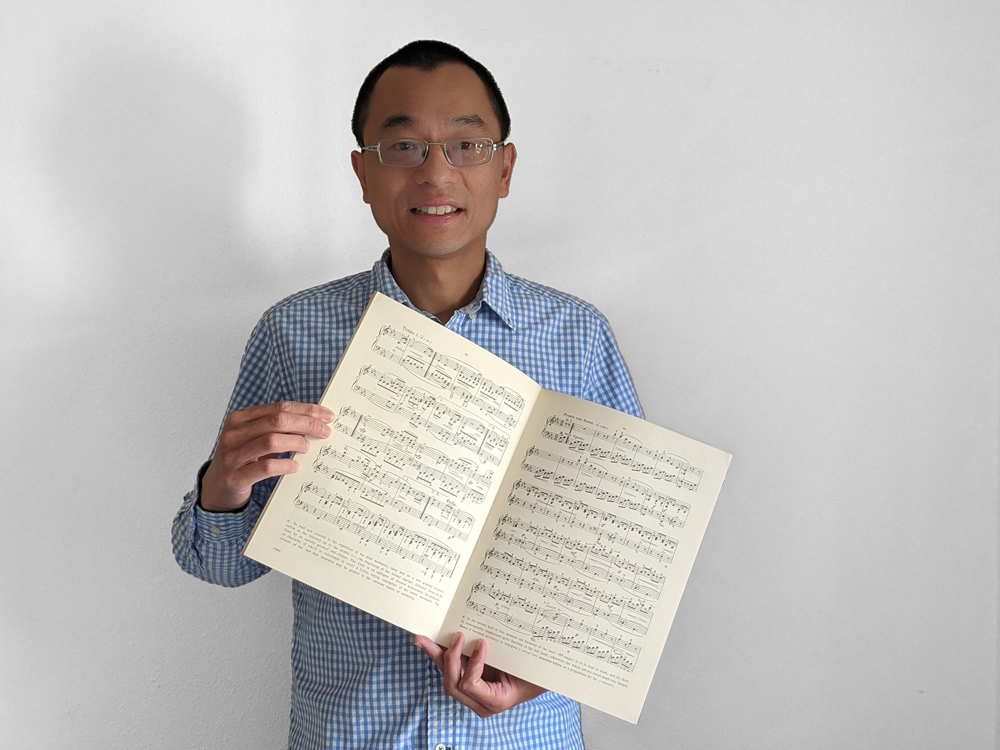Houzzer Profile: Ernest Mak, Engineering

We continue to celebrate early Houzzers in honor of Houzz’s 10 year anniversary. As a software architect, Ernest Mak oversees the structure of the Houzz website, but Houzzers may also recognize him from the melodic tunes he has often played on the piano in the Houzz HQ cafe. Outside of work, he enjoys spending time with his family — his two kids keep him very busy!
Why did you become a software engineer?
Growing up, I loved to play music and practiced the piano for hours every day, but when it came time to enter university, I thought science and technology might be a more practical route. During my studies, I found my way to computer science, where I felt I would have the potential to reach the most people with my work. I like to tackle problems logically and produce software that will make a positive impact on people’s daily lives, so it was the right path for me.
What do you do at Houzz?
I work with our engineering teams to develop the structure for the Houzz website. I also help to ensure that new systems will satisfy product requirements and can be easily maintained despite increased usage as the tools become more popular. I’m kind of like a fortune teller who can see into the future and identify whether the current code will support more traffic as we continue to scale. It’s fun and challenging work.
How did you hear about Houzz?
I met our cofounder, Alon Cohen, through a colleague at a previous role. Alon was hiring his first team of engineers and I liked his approach. He wanted to find the right people and grow the team purposefully.
Even at that early stage, Houzz was already becoming popular among the professional community and I realized the potential for Houzz to make a real impact on people’s lives — making it easier for people to connect with home professionals and create their dream homes. Friends of mine, who were interior designers and general contractors, were already telling me that they loved Houzz, so I knew that Alon and his cofounder, Adi Tatarko, were on to something big. I wanted to be a part of it.
What projects are you most proud of?
I had the opportunity to help Houzz expand internationally, which I’m very proud of because much of the code we put in place at the time is still in use today. That proves we were successful in planning and architecting the structure for our international platforms.
I also worked with the backend team to help migrate our infrastructure from a physical data center to the cloud. This was an enormous undertaking and a great accomplishment.
How does the code compare to early days?
It’s far more elaborate. As we’ve grown, we’ve scaled our code to support additional traffic, direct to new features and expand to international platforms. With the most recent launch of our SaaS product for home professionals, Houzz Pro, our entire site and architecture have become more intricate. We now process data asynchronously, or offline, so that we can serve the most relevant information to our users when they need it. That said, some things have stayed the same since the early days, and are still powered by some of Alon’s original code!

How have the Houzz offices changed over the years?
We didn’t get the piano until we moved to the University Avenue office in downtown Palo Alto. Adi and Alon asked if we wanted one, and I was a big proponent! I only played it after hours though.
What makes Houzz stand out?
It’s the people. We have a very talented team who collaborate well and support each other. No matter what challenges you might face, you can always find a group of people to troubleshoot, find a solution and get things done.
How have you used Houzz at home over the years?
My wife and I used Houzz during a remodel for our master bathroom. We found inspiration through photos and purchased materials, like tiles and flooring, through Houzz.
Any final thoughts?
Ten years is quite a milestone, but we have a lot of work ahead of us. We’re not an old company by any means, in fact, we’re still in our teenage years at Houzz.





